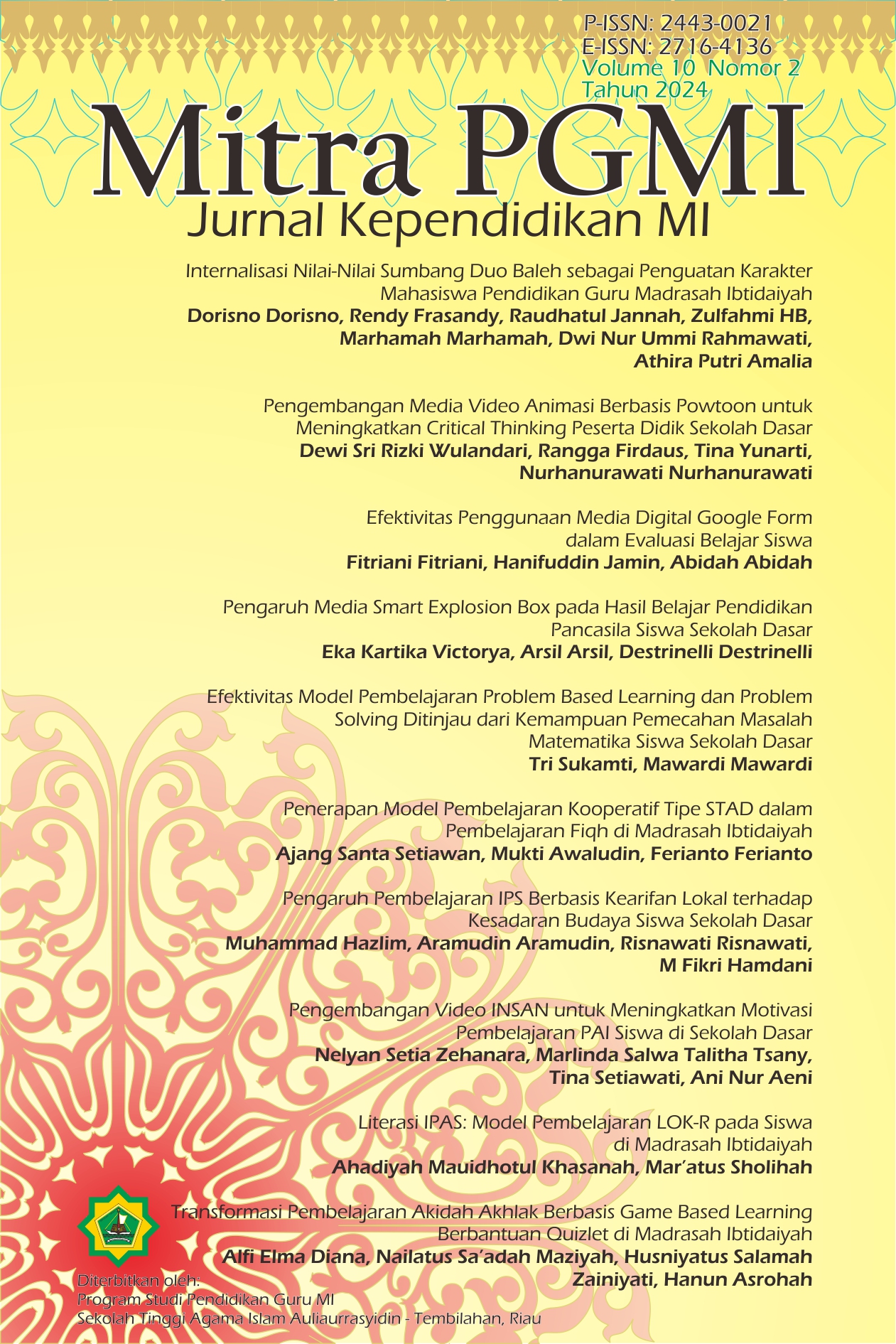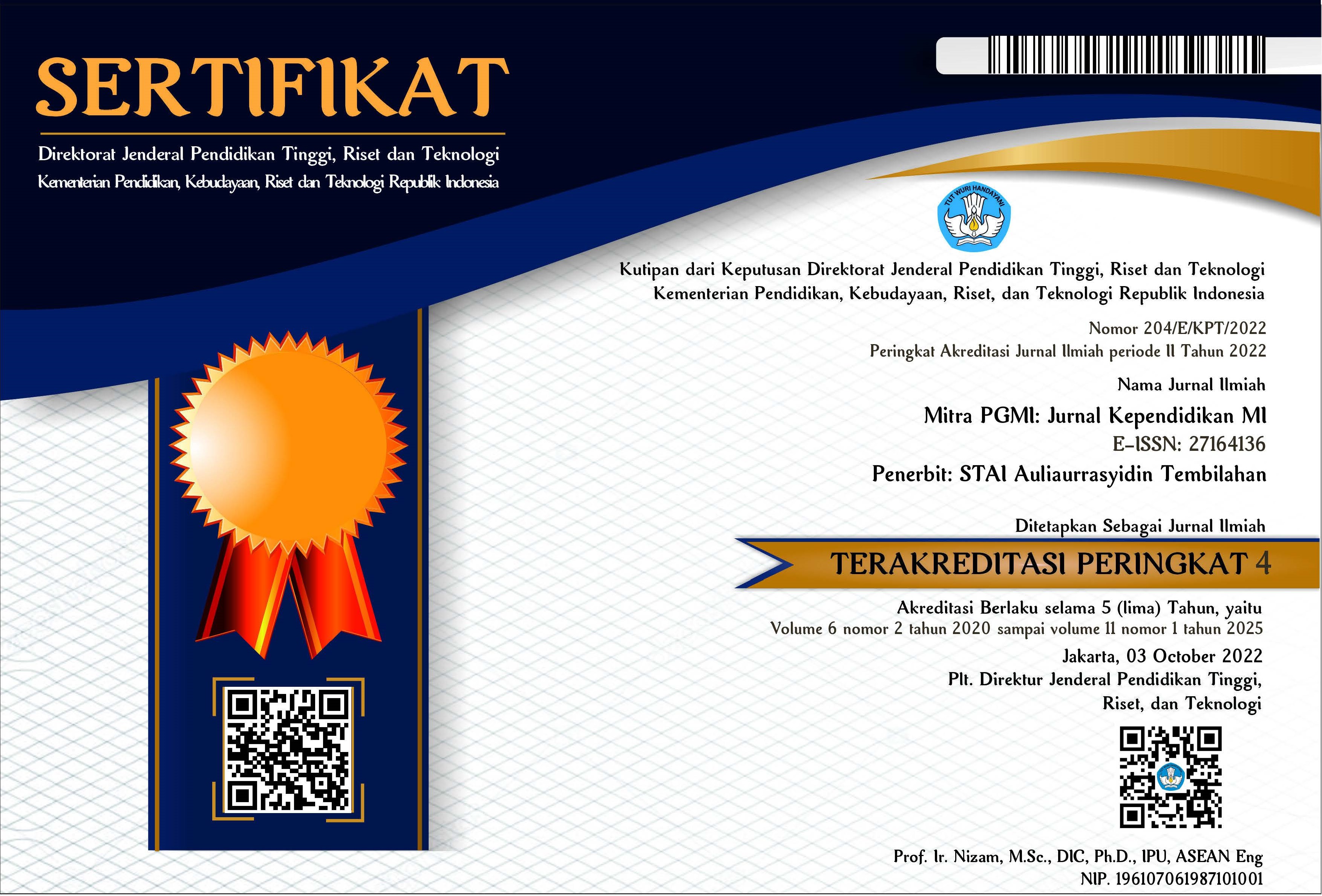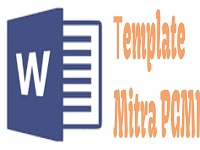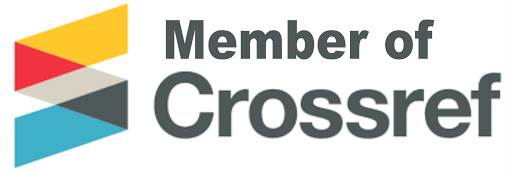Literasi IPAS: Model Pembelajaran LOK-R pada Siswa di Madrasah Ibtidaiyah
DOI:
https://doi.org/10.46963/mpgmi.v10i2.2104Keywords:
LOK-R learning model, Science Literacy, Islamic Elementary SchoolAbstract
This study aims to describe the steps of applying the LOK-R learning model to improve the science literacy of grade IV and V students at Madrasah Ibtidaiyah Kedungrejo. The LOK-R learning model includes planning, implementation, and evaluation, and is used to improve science literacy at MI Al-Islamiyah Kedungrejo. This research used a descriptive qualitative method with a field research approach. Data were collected through observation, interviews and documentation. The results showed that the LOK-R learning model was effective in improving students' science literacy. In the planning stage, teachers and students prepare materials and develop learning objectives. At the implementation stage, literacy activities, orientation, collaboration, and reflection were carried out. At the evaluation stage, the improvement in science literacy competencies was significant, with 32 out of 35 students showing improvement. Before implementation, only 15 students had good IPAS literacy, but after implementation, the number increased to 32 students. The LOC-R learning model is proven to be effective for improving IPAS literacy in science learning.
Downloads
References
Arzfi, B. P., & Jamna, J. (2024). Implementasi Teori Belajar Humanistik dalam Pembelajaran Berdiferensiasi IPAS di Sekolah Dasar. Mitra PGMI: Jurnal Kependidikan MI, 10(1), 39–49. https://doi.org/10.46963/mpgmi.v10i1.1639
Asesmen Kompetensi Madrasah Indonesia (AKMI). (2022). Modul 1 Model Pembelajaran Literasi Sains.
Bonwell, C. C. and J. A. Eison. (1991). Active Learning: Creating Excitement in the Classroom. In ASHE-ERIC Higher Education Reports.
Dewi, Lusiana, Sri Jumini, and N. P. Adi. (2022). “Implementasi Media Pohon Literasi Untuk Meningkatkan Literasi Sains Murid Pada Mata Pelajaran IPA.” Journal of Education and Teaching (JET) 3(2):247–67.
Dhesita, S. Joe. (2023). Analisis Penerapan Model Pembelajaran Lok-R Terhadap Kemampuan Literasi Siswa Dalam Pembelajaran Sejarah. Jurnal Ilmiah WUNY 5(1):210–26.
Filipiak, Ewa. (2018). Cultural-Historical Theory by Lev S. Vygotsky: Strategies of Studies on Children’ s Learning and Development. Repozytorium 30(2):14.
Ibda, H. & Wijanarko, Andrian Gandi, M. (2022). Peningkatan Literasi Sains Dan Hasil Belajar Siswa Kelas V Madrasah Ibtidaiyah Melalui Program Satu Siswa Satu Video Improving Science Literacy and Learning Outcomes for Class V Students of Madrasah Ibtidaiyah Through the One Student One Video. 4(1), 27–35.
Ifan Dwi Mahendra, Suhadi, Y. F. U. (2023). Penerapan strategi index card match dalam meningkatkan prestasi belajar siswa pada mata pelajaran fiqih kelas viidimadrasahtsanawiyah muhammadiyah sangen tahun pelajaran 2023/2024. 6:4237–48.
Jannah, M. (2023). Penerapan model pembelajaran lok-r (literasi, orientasi, kolaborasim dan refleksi) dalam meningkatkan literasi membaca (maharah qiraah) pada bacaan teks berbahasa arab.”. Muhadasah Jurnal Pendidikan Bahasa Arab 5.
Kemendikbud. (n.d.). Prinsip-prinsip pembelajaran.
Ngawi, M., Abid, M., & Khilmi, A. L. (2024). Evaluasi Formatif Dalam Pengajaran di Sekolah Smk. 1(3), 198–202.
Prasetiyaningsih, Anis. (2023). Improving student’s scientific literacy through jeng kelin gallaw as inovation learning model for middle student.”. 16–30.
Pratiwi, S. N., C. Cari, and N. S. Aminah. (2019). Pembelajaran IPA Abad 21 Dengan Literasi Sains Siswa. Jurnal Materi Dan Pembelajaran, 9, 34–42.
Prof. Dr. Sugiyono. (2015). Metode Penelitian Pendidikan. ALFABETA: Bandung.
Republik Indonesia Kabinet, S. (n.d.). Undang-undang Republik Indonesia. https://jdih.setkab.go.id/PUUdoc/7308/UU0202003.htm
Yusrah, Yusrah, Adiatama Ginting, Haryati Haryati, and A. S. (2020). Sosialisasi Model Pembelajaran Literasi Orientasi Klaborasi Refleksi (LOK-R) Pada Guru MIN 12 Langkat. Jurnal Pengabdian Kepada Masyarakat, 5(3):2, 48–53.
Downloads
Published
Issue
Section
License
Copyright (c) 2024 Ahadiyah Mauidhotul Khasanah, Mar’atus Sholihah

This work is licensed under a Creative Commons Attribution-ShareAlike 4.0 International License.
Authors who publish with this journal agree to the following terms:
1. Copyright on any article is retained by the author(s).
2. The author grants the journal, right of first publication with the work simultaneously licensed under a Creative Commons Attribution shareAlike 4.0 International License that allows others to share the work with an acknowledgment of the work’s authorship and initial publication in this journal.
3. Authors are able to enter into separate, additional contractual arrangements for the non-exclusive distribution of the journal’s published version of the work (e.g., post it to an institutional repository or publish it in a book), with an acknowledgment of its initial publication in this journal.
4. Authors are permitted and encouraged to post their work online (e.g., in institutional repositories or on their website) prior to and during the submission process, as it can lead to productive exchanges, as well as earlier and greater citation of published work.
5. The article and any associated published material is distributed under the Creative Commons Attribution-ShareAlike 4.0 International License








2.png)


